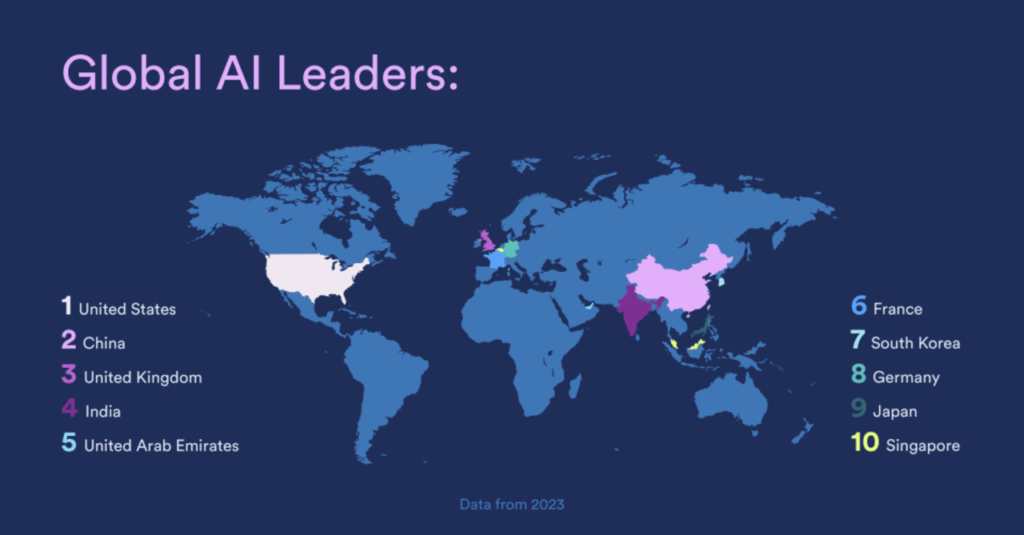Stanford’s Global Vibrancy Tool tracks 42 indicators, from patents to private funding, to identify global AI power rankings. It explains why the U.S. stands out and maintains a strong edge over other nations.
The Global AI Vibrancy Tool evaluates AI ecosystems across eight pillars: research and development, responsible AI, economy, education, diversity, policy and governance, public opinion, and infrastructure. Key indicators include AI journal publications, private investments, passed AI legislation, and foundation model datasets.
The tool provides policymakers, industry leaders, researchers, and the public with actionable, data-driven insights. Policymakers can shape strategic decisions, businesses can analyze global AI trends, and the public can access reliable data to better understand AI discussions.
Stanford HAI’s AI Index aims to inspire global stakeholders to enhance data collection and sharing, improving transparency in the AI landscape. Regular updates will keep the tool relevant for tracking AI progress worldwide.
This year’s top ten countries are as follows:
- United States: The U.S. leads the global AI power rankings with a wide margin, excelling in R&D and the AI economy. It produces the most advanced AI machine learning models, attracts the highest private investment, and leads in responsible AI research.
- China: China showcases strong performance in R&D, economy, and infrastructure. Its focus on cutting-edge AI technologies and growing R&D investments cements its position as a global AI leader.
- United Kingdom: The U.K. stands out in R&D, education, and policy and governance, demonstrating balanced strengths across these areas.
- India: India performs well in R&D and has shown notable recent growth in the economy pillar.
- United Arab Emirates: The U.A.E. achieves high scores in the economy pillar, highlighting its strong investment focus.
- France: France ranks sixth, excelling in policy and governance, education, and infrastructure.
- South Korea: South Korea ranks seventh, with strengths in policy and governance, infrastructure, and public opinion.
- Germany: Germany ranks eighth, showing strong performance in R&D, responsible AI, and education.
- Japan: Japan excels in infrastructure, R&D, and economy, maintaining its competitive edge.
- Singapore: Singapore demonstrates strengths in the economy, diversity, and responsible AI, showcasing a well-rounded approach.
Flexibility, Transparency, and a Call for More Data
The Global Vibrancy Tool, first launched in 2017, relaunched this year with expanded data and a more user-friendly, flexible interface.
“This tool stands out from other AI-related national indexes by allowing users to adjust weights and assign different values to indicators,” says Vanessa Parli, director of research at Stanford HAI and a member of the AI Index Steering Committee. “We understand that perspectives on a country’s AI standing vary, so we designed flexibility into the system.”
Parli hopes the tool will highlight the need for better data tracking in AI. “This relaunch is just the beginning,” she says. “We believe the tool will inspire improvements in AI data collection and spark new collaborations between HAI and countries worldwide.”
The team also plans to grow the dataset and include more countries in future updates. “We continue to add new data and countries as AI ecosystems expand,” adds Nestor Maslej.
Also Read About
Microsoft Introduces Magentic-One: An AI Agent for Web Browsing and Code Writing
